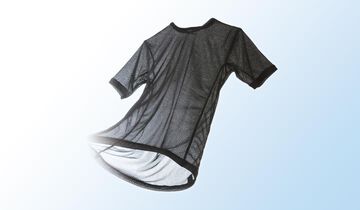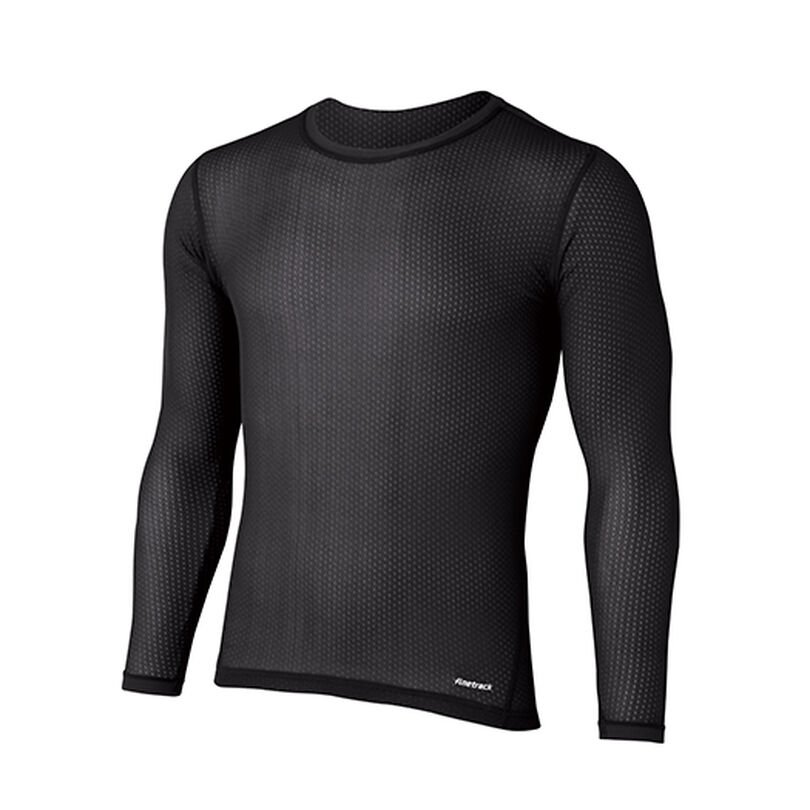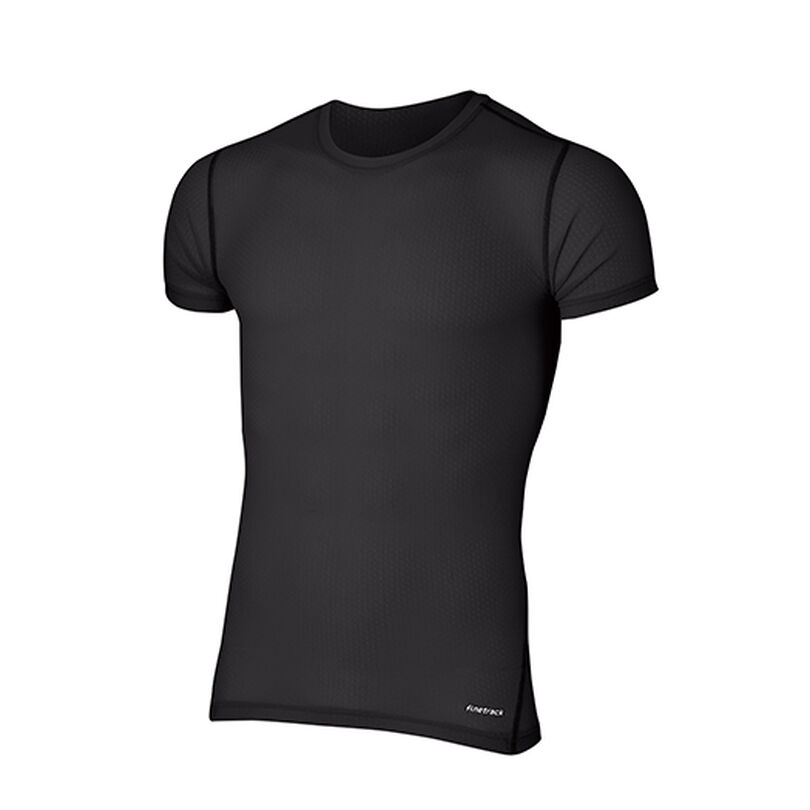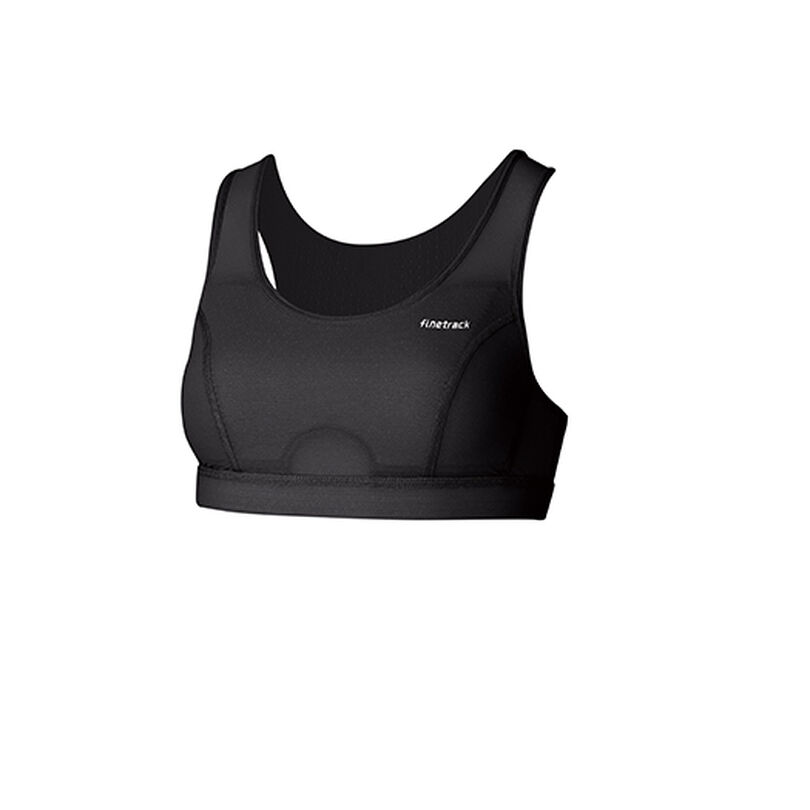Creating the world’s first water-repellent undergarment required an uncompromising focus on comfort, ensuring it could be worn for extended periods in the mountains. The goal was to create a fabric so thin, light, and unrestricted that it feels like wearing almost nothing—a second skin in the truest sense. In this third installment, we explore the advanced knitting techniques that make this next-level comfort possible.
The Elemental Layer fabric measures just over 0.4mm in thickness and weighs an astonishingly light 46g for the sleeveless version (36g for the women's), lighter than an egg or a standard golf ball. This extreme thinness and lightness were critical to its design.
Traditionally, mountaineering apparel was structured around a three-layer system: a moisture-wicking base layer, an insulation layer, and a waterproof outer layer. In order for Finetrack to introduce the idea of adding a water-repellent layer beneath the moisture-wicking base layer, it was crucial to overcome skepticism from mountaineers who were hesitant to adopt an additional layer due to concerns about extra weight and bulk. To gain acceptance among mountaineers, Finetrack had to ensure Elemental Layer was as thin and light as possible, eliminating concerns about added bulk.
After refining the technology behind "Mesh Openings That Pass Sweat" and "Durable Water Repellency," the final objective was to craft a fabric that provides an almost imperceptible wearing experience, making it feel as if nothing is there.
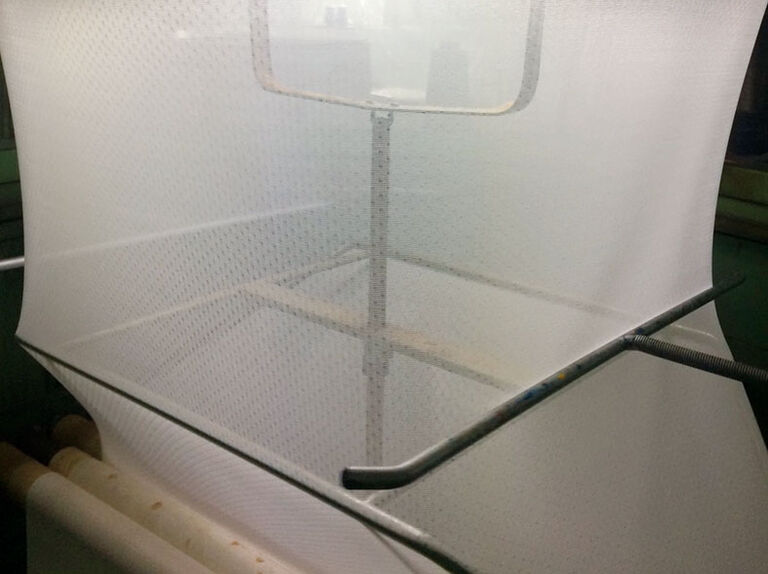
(Knitting the ultra-thin, perforated mesh fabric was not possible with the latest machines.)
"This won’t work. It’s too thin to be a piece of clothing…"
During development, Jun Tanaka from Unichika Trading held up the freshly knitted test fabric and voiced his concern. After numerous prototypes, the fabric was as thin as intended, but its burst strength and durability seemed too fragile for the standards of sportswear.
Kanayama, however, recognized its potential and responded with confidence:
"No, this is actually pretty close to what I expected. Let’s make something out of this!"
He understood that this fabric defied conventional norms, but he also believed that playing it safe would never achieve the feeling of wearing "almost nothing." Later, when the fabric was brought to the sewing factory, the technicians expressed their doubts: "How do we sew this incredibly thin fabric?" It was so delicate that working with it seemed impossible.
But thinness alone wasn’t the only challenge. Another crucial factor affecting comfort was kickback, the fabric’s controlled elasticity that allows it to stretch and then gradually return to its original shape. If it was too weak, the fabric wouldn't fit properly; if too strong, it would create a restrictive feel.
When the Elemental Layer fabric is stretched and then gently released, it gradually returns to its original shape, occasionally leaving a faint "wrinkle" or "crease." This subtle kickback is essential to creating the feeling of wearing almost nothing.
Typically, any visible wrinkle or crease in fabric is considered undesirable. "As a fabric manufacturer, we were naturally concerned," says Mr. Tanaka. "However, rather than compromising or settling for a safer alternative, Finetrack conducted repeated field tests to achieve the optimal kickback balance, ensuring the fabric delivered the intended performance, feel, and comfort."
After overcoming many challenges along the way, the development was finally completed, marking the birth of the Elemental Layer fabric.
